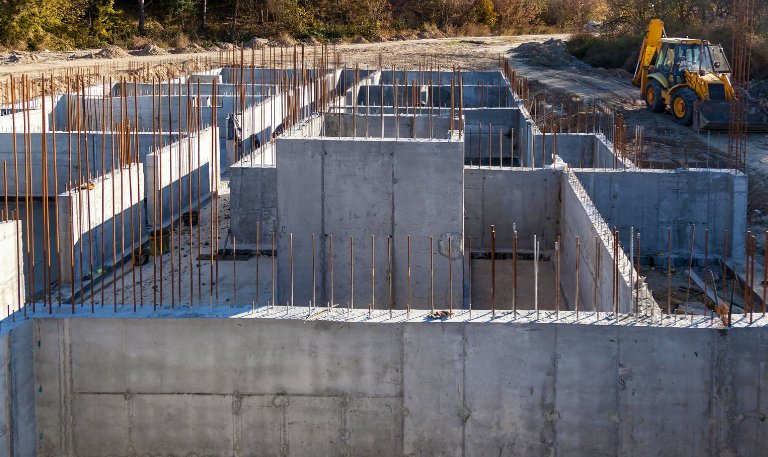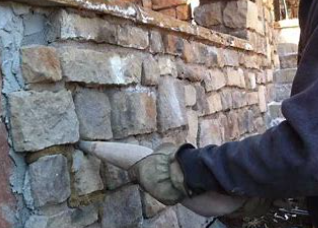Should You Fill Hollow Concrete Blocks?
Hollow concrete blocks are widely used in construction due to their strength, versatility, and lighter weight compared to solid blocks. Their hollow cores offer several benefits. This includes reducing overall weight and providing room for insulation or utility installations.
However, a common question has been asked during projects: “Should I fill hollow concrete blocks?” This decision can significantly impact the strength, insulation, and structural integrity of a build. In this guide, we explore when filling hollow concrete blocks is appropriate and how it influences your construction project.
Understanding Hollow Concrete Blocks
Hollow blocks like the standard 8” X 8” X 16” concrete masonry unit are primarily made with voids that reduce weight without sacrificing too much strength.
These voids can be left empty in some applications or filled with materials like concrete, grout, insulation, or reinforcing bars. It will depend on the structural demands of the project.
The lightweight nature of hollow blocks makes them easier to transport and handle. They are ideal for large structures or areas where reducing the load on the foundation is necessary. However, there are instances where filling the hollow cores can enhance the performance of the structure. They can improve their load-bearing capacity and resistance to lateral forces.
Should I Fill Hollow Concrete Blocks?
The decision to fill hollow concrete blocks depends on several factors. This includes the type of structure, its location, and the intended use of the wall or surface being constructed. While hollow blocks can be used as they are for certain projects, there are scenarios where filling them becomes a priority to the integrity of the structure.
Filling hollow concrete blocks with additional material for load-bearing walls is often recommended to boost strength. The voids can be filled with concrete or grout to create a reinforced section that can handle higher compressive forces.
Adding rebar into the voids before filling them also increases the wall’s ability to withstand lateral forces such as wind or seismic activity. This approach is common in high-rise buildings, where the added strength is essential to supporting the structure.
In contrast, hollow blocks are used for interior partition walls or areas where load-bearing strength is not a primary concern. Leaving the blocks unfilled can be sufficient. The voids within these blocks help with insulation to keep the building cooler in summer and warmer in winter by trapping air. In these cases, filling the blocks is unnecessary. It would add to the cost and weight without providing additional benefits.
The Impact of Filling on Strength and Insulation
Filling hollow concrete blocks with concrete or grout is a proven method for increasing structural strength. When constructing load-bearing walls or other important parts of a building, filling the voids helps create a continuous structure that distributes weight more effectively. This is particularly important for multi-story buildings or walls exposed to extreme environmental forces.
Another benefit of filling hollow blocks is improved resistance to fire and moisture. Filling the cores can create a denser, more sturdy wall that withstands high temperatures. They will also be less likely to allow moisture penetration. In addition, reinforced blocks are more resistant to cracking and settling.
However, while filling hollow blocks enhances strength, it can also impact the block’s natural insulation properties. Unfilled hollow blocks help trap air, which provides thermal and sound insulation. Filling these voids can reduce the insulation effect by replacing the air pockets with solid material. This makes it necessary to consider other insulation methods if maintaining energy efficiency is a priority.
Applications Where Filling Hollow Blocks Is Necessary
There are specific construction scenarios where filling hollow concrete blocks is compulsory. In high-rise buildings, skyscrapers, or structures built in areas with high wind or seismic activity, filling the hollow cores with concrete and rebar is needed to maintain stability. Reinforcing these blocks adds the strength to resist lateral forces and helps prevent structural failure during natural disasters.
Similarly, when constructing retaining walls or exterior walls exposed to the elements, filling the blocks can provide added protection. This helps guard against pressure from soil, water, and temperature changes. Filled hollow blocks are also more resistant to cracking caused by freeze-thaw cycles.
On the other hand, the voids within hollow blocks provide sufficient strength for everyday use. It supports interior walls, partition walls, or other non-load-bearing applications. These walls benefit from the block’s natural insulation properties. Hence, they are a cost-effective choice for separating spaces without the need for additional reinforcements.
Our Role in Supporting Your Project
Deciding whether to fill hollow concrete blocks largely depends on the function and location of the structure you’re working on. For load-bearing or high-stress applications, filling the blocks with concrete and reinforcing them with rebar adds strength, stability, and resilience.
In contrast, for non-load-bearing walls or interior partitions, leaving the blocks unfilled can save on material costs and maintain the block’s insulating properties. We can advise on what is common practice at Ernest Maier. However, remember to consult the responsible engineer or code official for your specific project.
Ernest Maier has a long history of supplying top-tier construction materials such as concrete products and masonry solutions to make sure that your build stands the test of time.
We are here to help you make informed decisions for your next construction project. If you’re looking to learn more about which products to use, feel free to contact us for professional guidance. Our team is committed to providing the highest quality materials and support to guarantee the success of your build.
Latest News

4 Ways To Reinforce Concrete
Concrete is one of the most fundamental materials used in construction. If you’re working on a domestic project or a […]

The Environmental Benefits Of Using Ready-Mix Concrete
The construction industry is changing quickly to meet the growing demand for sustainability and eco-friendly practices. One of the most […]

6 Essential Tips For Grouting Stone Veneer
Grouting stone veneer is an important step in the installation process that can significantly impact the overall look and durability […]

How Long Does Type S Mortar Take To Cure?
Like all mortars, Type S mortar requires careful attention during the curing process to reach its full strength. This isn’t […]
